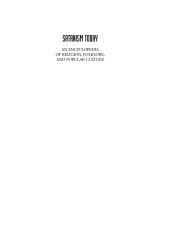I. VAMA MARGA Foundations Of The Left-Hand Path - staticfly.net
I. VAMA MARGA Foundations Of The Left-Hand Path - staticfly.net
I. VAMA MARGA Foundations Of The Left-Hand Path - staticfly.net
Create successful ePaper yourself
Turn your PDF publications into a flip-book with our unique Google optimized e-Paper software.
depiction of sinister Tantra provided in the work of Sir John Woodroffe<br />
(1865—1936). Not an occultist or magician from the outer fringes of<br />
society, Woodroffe was a thoroughly respectable high-ranking Justice living<br />
210<br />
in Calcutta at the end of the ni<strong>net</strong>eenth century, who developed a personal<br />
fascination with Tantric thought and practice.<br />
With his lawyer's zeal for defense and meticulous explication,<br />
Woodroffe took pen to paper under the mystical Celtic pseudonym of Arthur<br />
Avalon, and produced a series of groundbreaking works that explained.<br />
Tantra as a legitimate spiritual discipline. <strong>The</strong> Avalon books not only served<br />
to remove some of Tantra's stigma in the minds of his European readers.<br />
Many English-speaking Indians also regarded the left-hand path as a<br />
shameful relic of a supposedly savage heritage they would just as soon have<br />
forgotten in their desire to become a modern Westernized nation. Avalon's<br />
work introduced a wide native Indian readership to the value of practices<br />
that had previously been clouded with secrecy. Earlier Indian works in<br />
English concerning Tantra had offered a heavily censored, whitewashed<br />
version of the Tantric teachings, usually from the derisive and biased<br />
perspective of the Brahmin caste authors who wrote them. Strangely, it took<br />
a European to make Tantra into at least a partially acceptable subject of<br />
study in India.<br />
For all of the great benefit of Avalon's books in keeping an<br />
imperiled tradition alive, and the pioneering scholarship with which they<br />
were written, he also succeeded in promulgating a long-lasting<br />
misinterpretation of the left-hand path. If Blavatsky painted the Vama<br />
Marga in the most fiendish black, Avalon just as zealously whitewashed the<br />
subject, ignoring and evading the more socially taboo aspects of the secret<br />
rites. Woodroffe went overboard in his eagerness to simultaneously justify<br />
and downplay the notorious erotic aspects of Tantricism's left-hand path.<br />
Avalon stresses the dangers and grave consequences incurred by an adept<br />
who undergoes sacred sex without totally extinguishing every last trace of<br />
carnal enjoyment and biological lust from the act. Sir John did his best to<br />
explain the spiritual philosophy underpinning Tantra's sexual form of<br />
illumination, but his arguments come across as defensive, reflecting his own<br />
rather prudish prejudices.<br />
Considering the hysterical Victorian attitudes prevailing at the time,<br />
and Woodroofe/Avalon's objective of preventing Tantra from being declared<br />
against the law, his reticence is perfectly understandable. Unfortunately,<br />
many other authors unexposed to more primary sources and teachers have<br />
unwittingly taken up this misleading and strait-laced approach directly from<br />
Avalon's writings. <strong>The</strong> result has been that it's now practically become an<br />
article of faith among Westerners that the serious Tantric initiate must strive<br />
manfully (or womanfully) to resist all sensations of carnal delight during the<br />
sexual rite. This priggish attitude can be illustrated in his remark that "Many<br />
years ago Edward Sellon, with the aid of a learned Orientalist of the Madras<br />
Civil Service, attempted to learn [the secret rite's] mysteries, but for reasons,<br />
which I need not here discuss, did not view them from the right standpoint."<br />
211<br />
<strong>The</strong> "right" standpoint, we must imagine, can only be the anti-hedonic<br />
interpretation of sexual illumination favored by Avalon, whose sensibilities<br />
were offended by Sellon's more lustful approach to the subject.<br />
Nevertheless, Avalon's books are essential reading due to their wealth of<br />
objectively conveyed knowledge concerning the principles and methods of<br />
Tantra.<br />
Avalon is also notable as the first author to consider the possibility<br />
of left-hand path methods of sexual taboo-breaking as being "Antinomian"<br />
in character. In light of the recent connection of some Western schools of<br />
the nominal left-hand path with the antinomian concept, Avalon's much
















